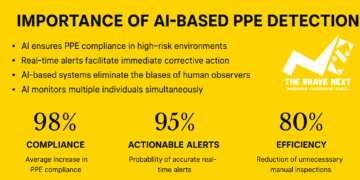Managing a healthcare facility requires balancing high-quality patient care with operational efficiency and financial sustainability. Rising operational costs, evolving patient expectations, and the need for advanced technology make it essential for hospitals and clinics to adopt practical strategies to reduce unnecessary expenses while improving productivity. This not only strengthens your facility’s financial health but also enhances patient outcomes and staff satisfaction.
Here are 10 effective ways to cut costs and boost productivity in your healthcare facility without compromising care quality.
1. Streamline Administrative Processes
Administrative inefficiencies often drain resources in hospitals and clinics. Implementing automated billing, appointment scheduling, and electronic medical records (EMRs) can significantly reduce paperwork, save staff time, and minimize manual errors. This improves patient flow and allows healthcare workers to focus on clinical tasks.
2. Optimize Energy Usage
Healthcare facilities are high-energy consumers. Adopting energy-efficient lighting, HVAC systems, and water-saving devices can substantially lower utility bills. Conduct energy audits regularly to identify areas for improvement and invest in renewable energy sources where possible, contributing to sustainability and cost savings.
3. Reduce Supply Chain Waste
Over-ordering or mismanaging medical and non-medical supplies increases operational costs. Implement an inventory management system that tracks real-time usage, automates reordering based on demand, and reduces stock expiration and wastage. Group purchasing with other facilities can also lower procurement costs.
4. Implement Preventive Maintenance for Equipment
Frequent equipment breakdowns lead to costly repairs and service disruptions. Establish a preventive maintenance schedule for medical equipment to ensure reliability and extend lifespan. This reduces emergency repair costs and minimizes downtime, ensuring continuity in patient care.
5. Leverage Technology for Remote Consultations
Telemedicine reduces physical crowding, administrative costs, and resource strain while expanding your facility’s reach. By incorporating virtual consultations, your facility can save on operational expenses while maintaining patient volumes and satisfaction.
6. Train and Empower Staff
Staff errors, inefficiencies, and high turnover can drive up costs. Invest in continuous training, clear SOPs, and upskilling programs to improve workflow efficiency and reduce errors in patient handling and administrative tasks. Engaged, well-trained staff contribute directly to productivity.
7. Analyze and Reduce Overtime
Excessive overtime can strain budgets and reduce employee morale. Regularly analyze workload distribution and patient flow to ensure optimal staffing. Using data-driven scheduling can help manage peak hours efficiently while preventing unnecessary overtime costs.
8. Improve Patient Flow Management
Long patient wait times affect both satisfaction and operational efficiency. Use digital queue management, clear patient pathways, and effective triage systems to reduce congestion and optimize care delivery. Faster patient movement through the facility reduces costs while enhancing patient experience.
9. Adopt Digital Recordkeeping and Reporting
Transitioning to electronic health records (EHRs) reduces the costs associated with paper records, storage, and manual handling errors. Digital records improve information sharing across departments, reduce duplication of tests, and streamline patient care, saving time and money.
10. Invest in High-Quality Medical Equipment
Reliable medical equipment reduces recurring repair and replacement costs while ensuring uninterrupted services. Investing in quality diagnostic machines, surgical tools, and patient monitoring systems can improve procedural efficiency, reduce operational delays, and enhance clinical outcomes, ultimately reducing long-term expenses.
Conclusion
Cutting costs while improving productivity in healthcare facilities requires a strategic, data-driven approach that prioritizes operational efficiency without sacrificing patient care quality. From adopting energy-saving practices and automating administrative processes to preventive equipment maintenance and investing in high-quality medical equipment, each step contributes to a financially healthier and more productive facility.
By implementing these strategies, healthcare administrators and facility owners can ensure their hospitals and clinics operate efficiently, remain financially sustainable, and continue providing excellent patient care in a competitive healthcare landscape.























